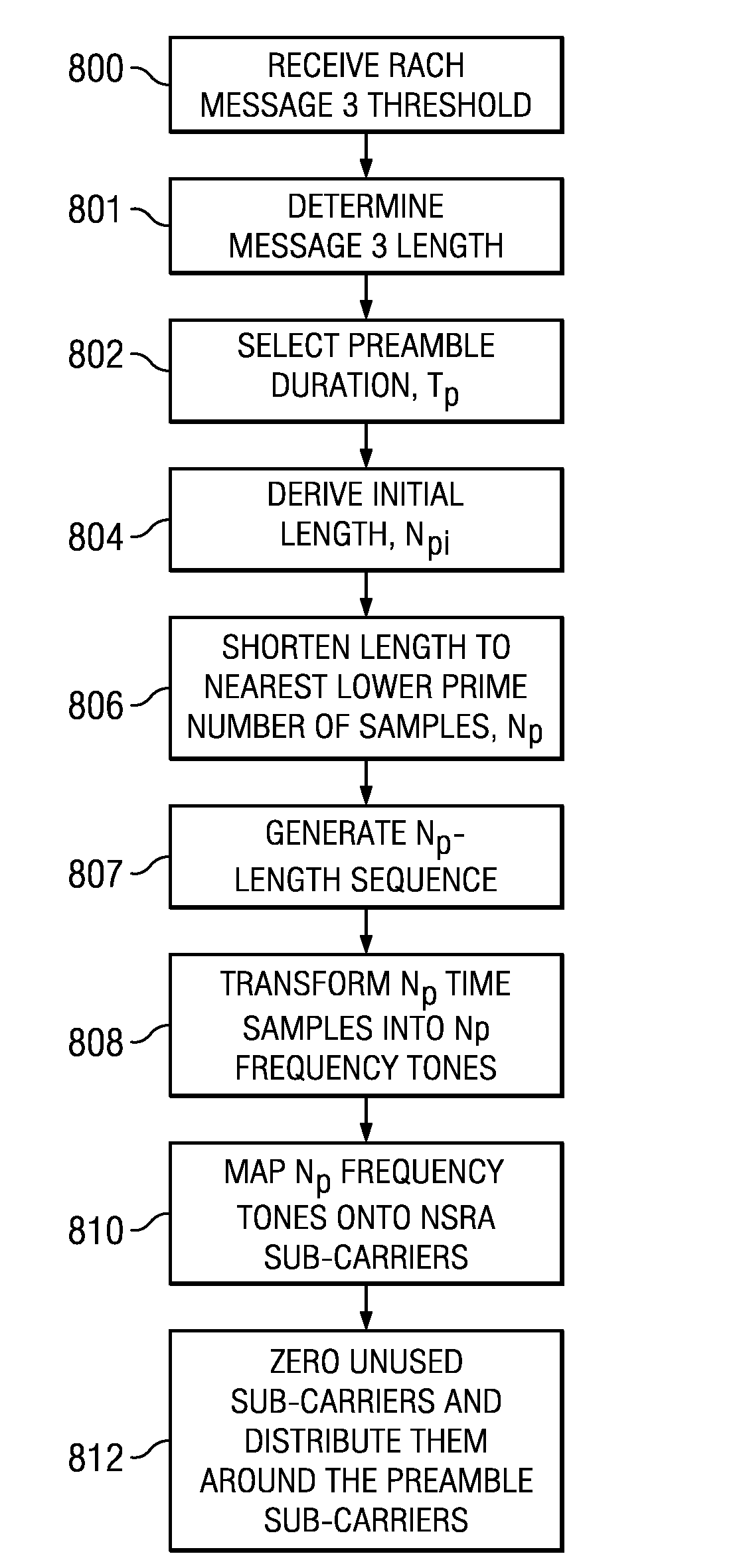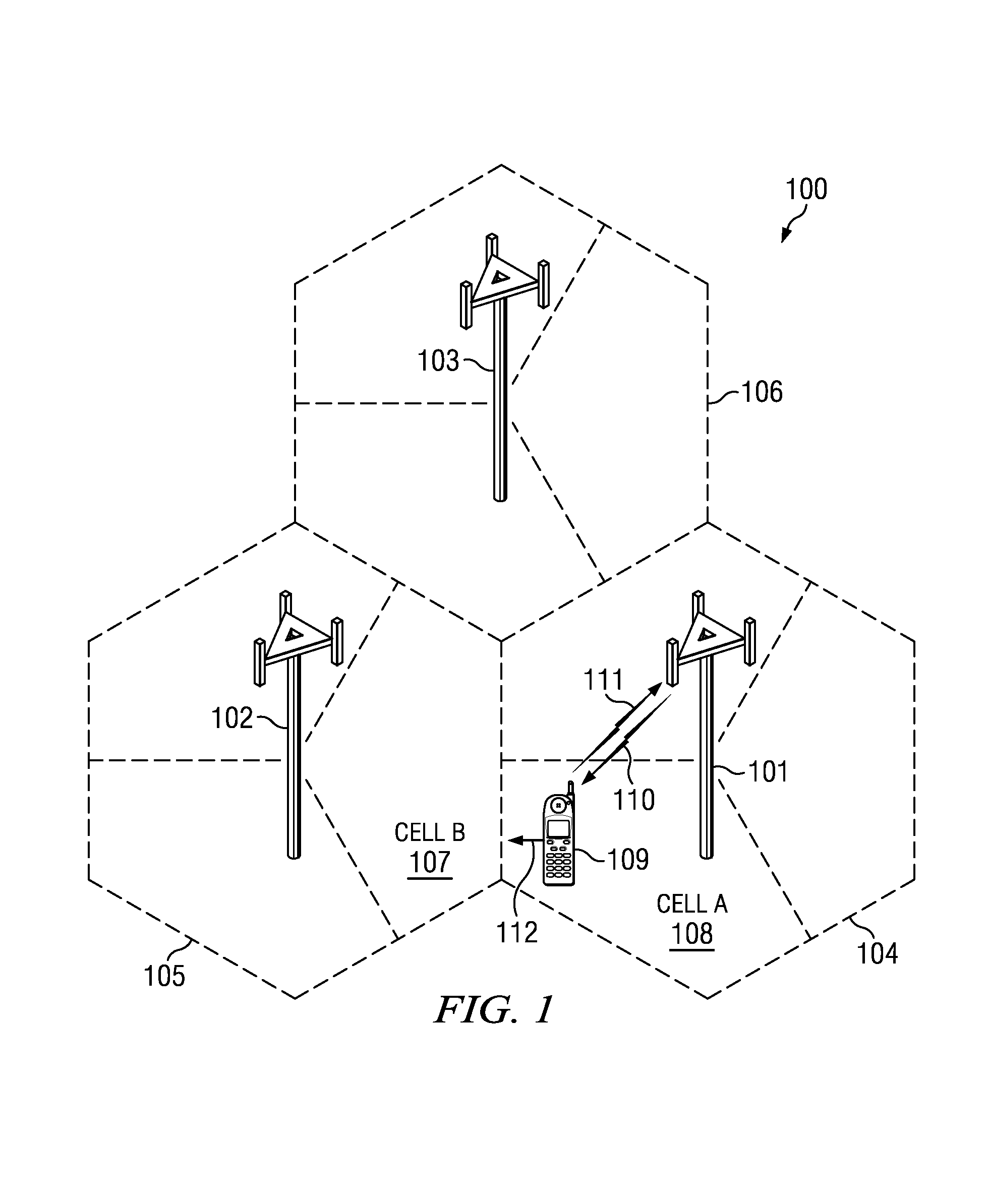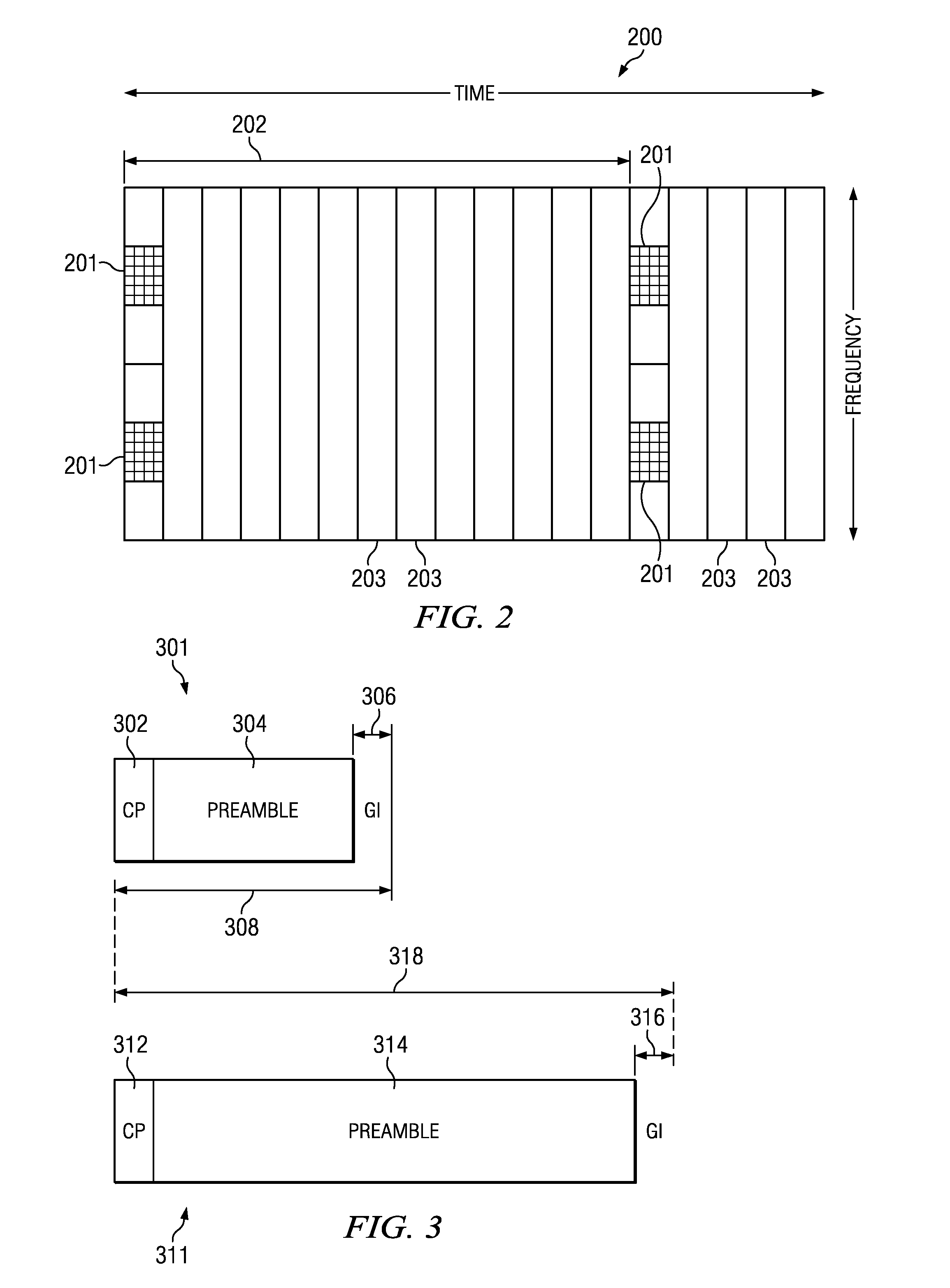Preamble Group Selection in Random Access of Wireless Networks
- Summary
- Abstract
- Description
- Claims
- Application Information
AI Technical Summary
Problems solved by technology
Method used
Image
Examples
Embodiment Construction
[0022]Most of the time, the eNB is not aware of the use-case that triggered a Random Access procedure, nor is it aware of the UE's buffer status. In absence of any information, the eNB can only allocate blindly one single standard resource for the first transmission on the PUSCH following a successful RACH preamble attempt, also referred to as message 3 of the Random Access procedure. The maximum message 3 size a cell-edge UE can afford in the worst-case coverage situation is 80 bits. It is generally agreed that this particular transmission sets the limits of the overall LTE UL coverage. However, even in such a scenario, it would be unnecessarily restrictive to impose this unique minimum transport block size (TBS) for message 3 to all UEs in the cell. As a result, two message sizes, or TBSs, are considered for message 3, namely a “smaller” message size, MESSAGE_SIZE_GROUP_A, and a “larger” message size, MESSAGE_SIZE_GROUP_B, as defined in 3GPP TS 36.321, Technical Specification Grou...
PUM
 Login to View More
Login to View More Abstract
Description
Claims
Application Information
 Login to View More
Login to View More - Generate Ideas
- Intellectual Property
- Life Sciences
- Materials
- Tech Scout
- Unparalleled Data Quality
- Higher Quality Content
- 60% Fewer Hallucinations
Browse by: Latest US Patents, China's latest patents, Technical Efficacy Thesaurus, Application Domain, Technology Topic, Popular Technical Reports.
© 2025 PatSnap. All rights reserved.Legal|Privacy policy|Modern Slavery Act Transparency Statement|Sitemap|About US| Contact US: help@patsnap.com



